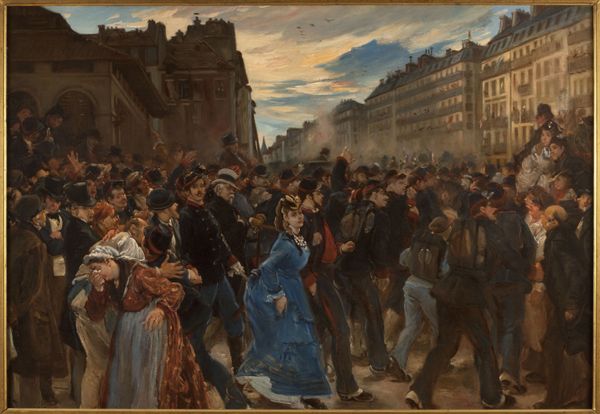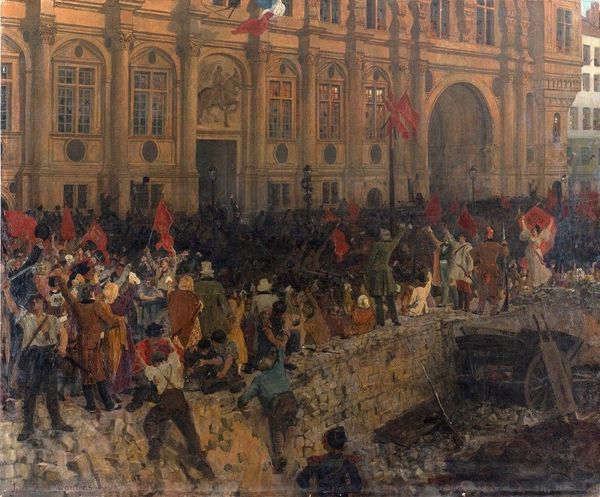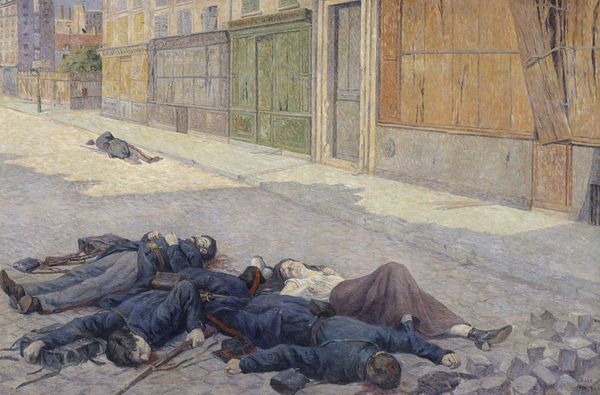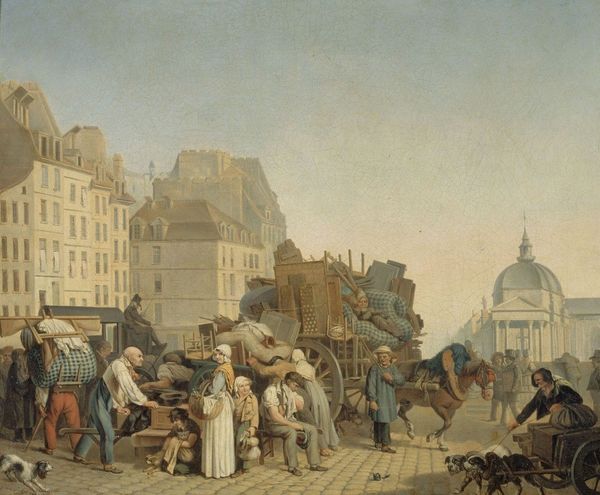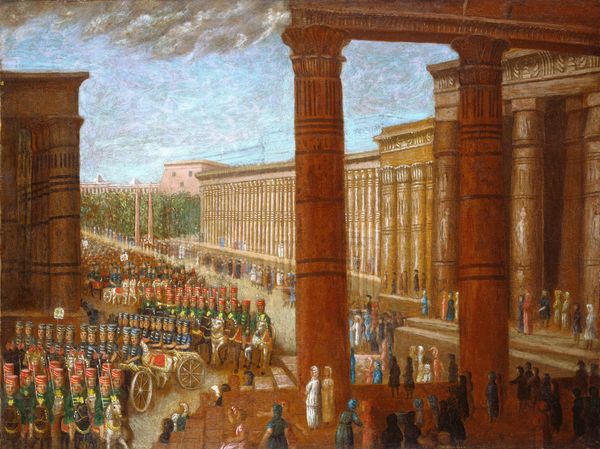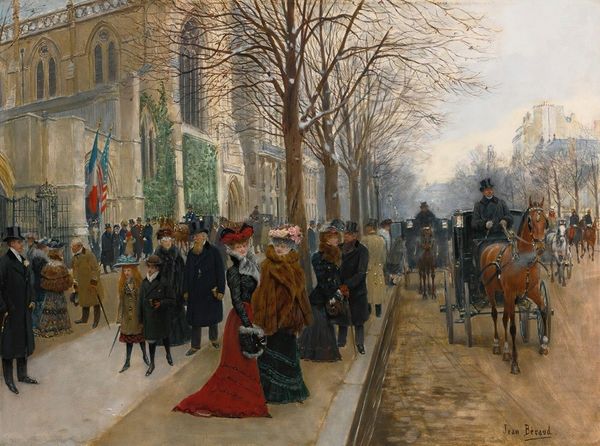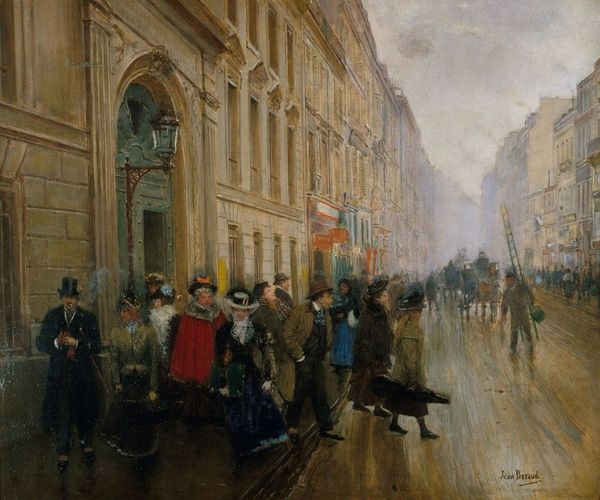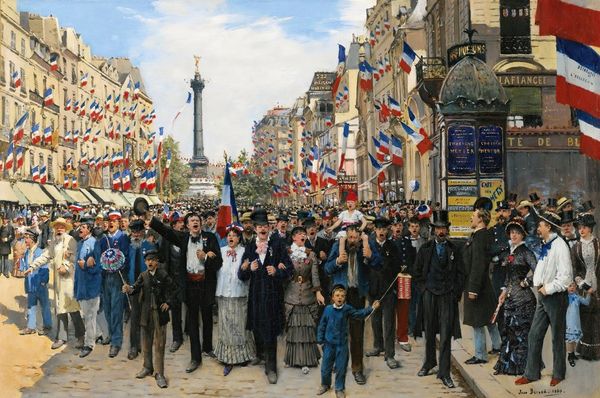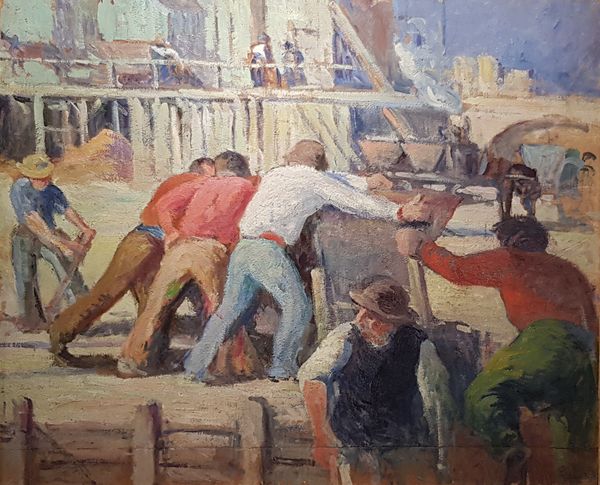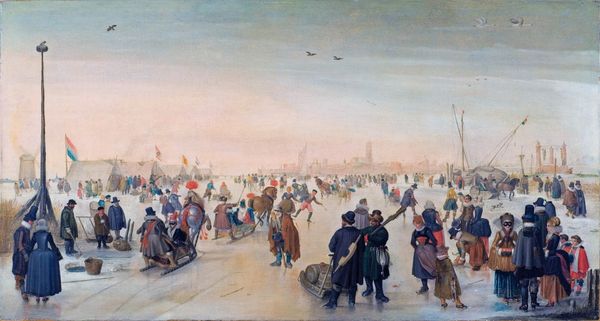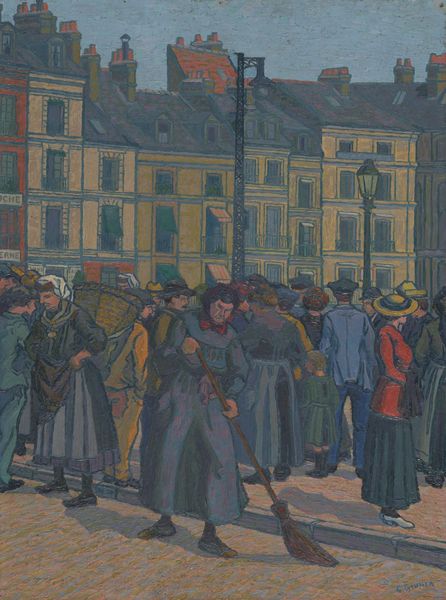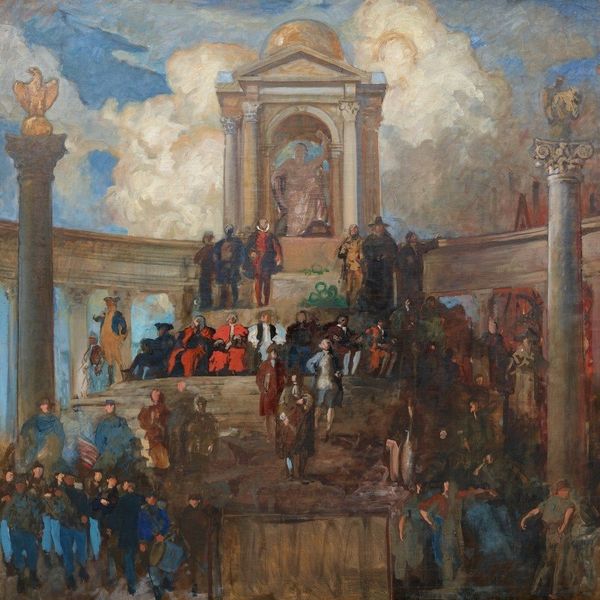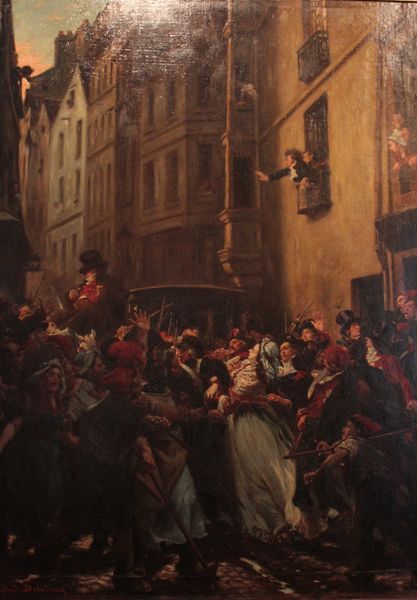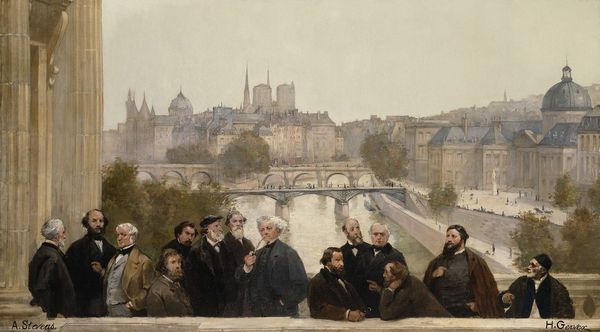
Copyright: Public domain
Curator: Maximilien Luce's "La Gare De L'est", created in 1917, presents us with a fascinating interplay of figuration and cityscape using oil paint. What are your initial thoughts? Editor: Overwhelming. There's this powerful contrast between the chaotic background and the still, almost mournful foreground. The figures are grouped in these dense clusters, weighed down by visible sorrow, set against a city pulsing with unknowable events. Curator: Indeed. Note how Luce structures the composition into distinct zones. The foreground, dominated by prone figures and muted tones, leads the eye towards a bustling square, rendered with brighter, impressionistic brushstrokes. There is tension derived by formal contrast. Editor: Absolutely. The red caps worn by many of the figures immediately catch my attention. It’s not just a dash of color, but an allusion to military identity, of course. And red is the color of both violence and life. Curator: A keen observation. Semiotically, we might consider the caps as visual signifiers of a shared experience of conflict. Their placement across the canvas creates a visual rhythm, drawing the eye through the composition but equally working as visual markers of loss and displacement. Editor: The postures speak volumes too. Some slump against pillars, finding solace or support in this cold architecture, echoing the soldiers’ search for hope amidst social disruption. Others look at their colleagues injured on the floor with clear pain in their eyes. Curator: Consider also how Luce handles light. There's no single, dominating light source; instead, we have dispersed light contributing to the sense of realism while enhancing the emotional depth of the scene. It mirrors the uncertain and somber mood of the time. Editor: I also notice the dog resting near one of the figures. Animals often symbolize loyalty, and here it enhances the narrative of faithfulness and shared burden, especially striking amidst the backdrop of a city possibly oblivious to their plight. It’s a compelling comment on the enduring nature of companionship during times of upheaval. Curator: Precisely. The genius is in Luce’s rendering of the subtleties of the scene, in his play with light and compositional structure and a sense of humanity through pure aesthetic qualities. Editor: Yes, through potent symbolism and raw emotion Luce gives lasting and complex weight to an era marred by conflict and great upheaval. Curator: Indeed, a striking blend of formal skill and socio-historical insight that continues to resonate with us today.
Comments
No comments
Be the first to comment and join the conversation on the ultimate creative platform.
